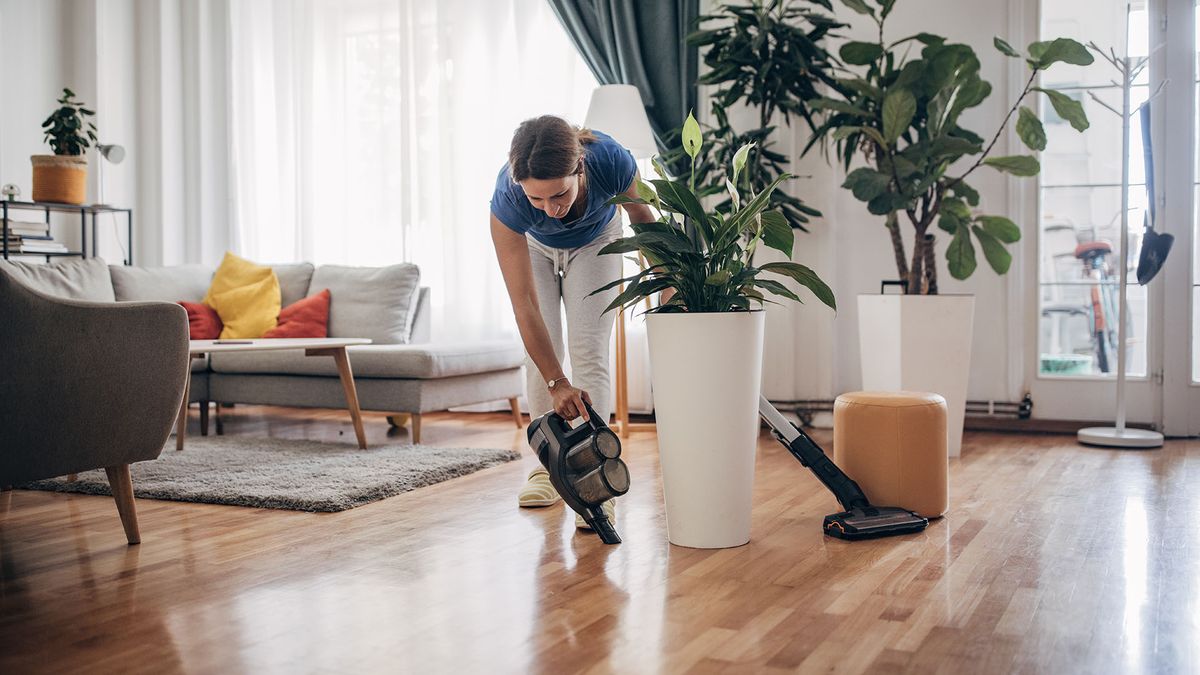Hardwood floors bring warmth, elegance, and timeless beauty to any home. Their durability and appeal make them a popular choice, but maintaining them requires a proper understanding of their finish. Different finishes react differently to cleaning methods and products, making it crucial to tailor your routine accordingly. Whether your floor has a penetrating oil finish, a polyurethane coating, or a hard wax oil treatment, knowing how to clean it properly will ensure its longevity and continued luster.
The Role of Hardwood Floor Finishes
 A finish serves as the protective layer on hardwood floors, shielding them from dirt, spills, and foot traffic. While all hardwood floors need regular maintenance, the type of finish determines the best cleaning approach. Some finishes absorb moisture more readily, while others create a strong, impermeable layer that repels dirt and water. Understanding the nature of the finish will help prevent damage, such as warping, dulling, or staining.
A finish serves as the protective layer on hardwood floors, shielding them from dirt, spills, and foot traffic. While all hardwood floors need regular maintenance, the type of finish determines the best cleaning approach. Some finishes absorb moisture more readily, while others create a strong, impermeable layer that repels dirt and water. Understanding the nature of the finish will help prevent damage, such as warping, dulling, or staining.
Cleaning Penetrating Oil-Finished Floors
Penetrating oil finishes soak into the wood rather than forming a hard surface layer. This type of finish enhances the natural beauty of the wood and gives it a soft, matte look. However, since it does not create a protective film, these floors require special care to prevent damage.
Cleaning oil-finished hardwood requires the use of specific soaps and cleaners designed for oiled wood. Harsh chemicals or excessive water can strip away the oil, leaving the wood vulnerable to dryness and stains. Instead, a gentle, pH-neutral cleaner should be used to maintain its nourishment. Reapplying oil periodically is necessary to keep the floor hydrated and protected. Unlike some other finishes, oil-finished floors develop a patina over time, which adds to their character but also demands consistent upkeep.
Maintaining Polyurethane-Finished Floors
Polyurethane finishes, whether oil-based or water-based, create a durable, protective barrier on the wood surface. This finish is popular in modern homes due to its resistance to scratches, moisture, and stains. It provides a glossy or satin sheen that does not require frequent reapplication like an oil finish does.
Cleaning polyurethane-finished hardwood is relatively simple, as these floors do not absorb moisture or stains easily. A damp mop with a hardwood floor cleaner is typically sufficient for regular cleaning. Abrasive scrubbers or excessive moisture should be avoided, as they can dull the finish over time. Unlike oil-finished floors, polyurethane-finished surfaces should not be waxed, as wax can create an uneven buildup and affect the appearance of the floor.
Caring for Hard Wax Oil-Finished Floors
A hard wax oil finish combines the deep penetration of an oil finish with a protective surface layer, offering a balance between durability and natural aesthetics. This type of finish provides a matte or satin appearance while maintaining the ability to repair small scratches or stains with spot treatments.
Cleaning a hard wax oil-finished floor involves using specially formulated cleaners that do not strip away the wax. Mild, non-abrasive cleaning solutions should be used to prevent damage. Additionally, reapplying a maintenance oil or wax periodically will help protect the surface and maintain its water-resistant properties. Since this finish allows for easy spot repairs, minor imperfections can often be buffed out without refinishing the entire floor.
Adapting Your Cleaning Routine to the Floor Finish
A one-size-fits-all approach to cleaning hardwood floors does not work when different finishes require different care techniques. Using the wrong cleaning method can lead to unnecessary wear, dulling, or even damage.
Floors with a penetrating oil finish need rehydration and protection rather than harsh cleaning. Regular dry mopping and occasional oil treatments help maintain their appearance. Polyurethane-finished floors benefit from a straightforward routine of damp mopping with appropriate cleaners and avoiding excessive moisture. Hard wax oil-finished floors require a careful balance of cleaning and occasional maintenance with wax or oil to preserve their protective qualities.
Common Mistakes to Avoid
One of the most common mistakes in hardwood floor maintenance is using too much water. Regardless of the finish, excessive moisture can seep into wood fibers, causing swelling, warping, or damage. Steam mops, while effective on some surfaces, can also harm hardwood floors, particularly those with oil or wax finishes.

Using the wrong cleaning products can also compromise the floor’s finish. Ammonia-based or acidic cleaners may strip protective layers, while wax-based polishes can create buildup on polyurethane-finished floors. Scouring pads or harsh scrubbing tools should also be avoided, as they can scratch the surface of the wood.
Another mistake is neglecting routine maintenance. Allowing dust and dirt to accumulate can act as an abrasive, gradually dulling the finish and causing micro-scratches. Regular sweeping or dry mopping is essential for preventing long-term wear.
How to Extend the Life of Your Hardwood Floor
A well-maintained hardwood floor can last for decades, provided it receives proper care. Placing area rugs in high-traffic areas reduces wear, while felt pads on furniture legs help prevent scratches. Controlling humidity levels in the home can also minimize wood expansion and contraction, which can lead to cracks or gaps over time.
For all types of finishes, periodic deep cleaning and professional maintenance can keep floors in their best condition. Floors with oil or wax finishes benefit from occasional reapplication to maintain their protective layers. For polyurethane-finished floors, refinishing may be needed after years of heavy use to restore their shine.

